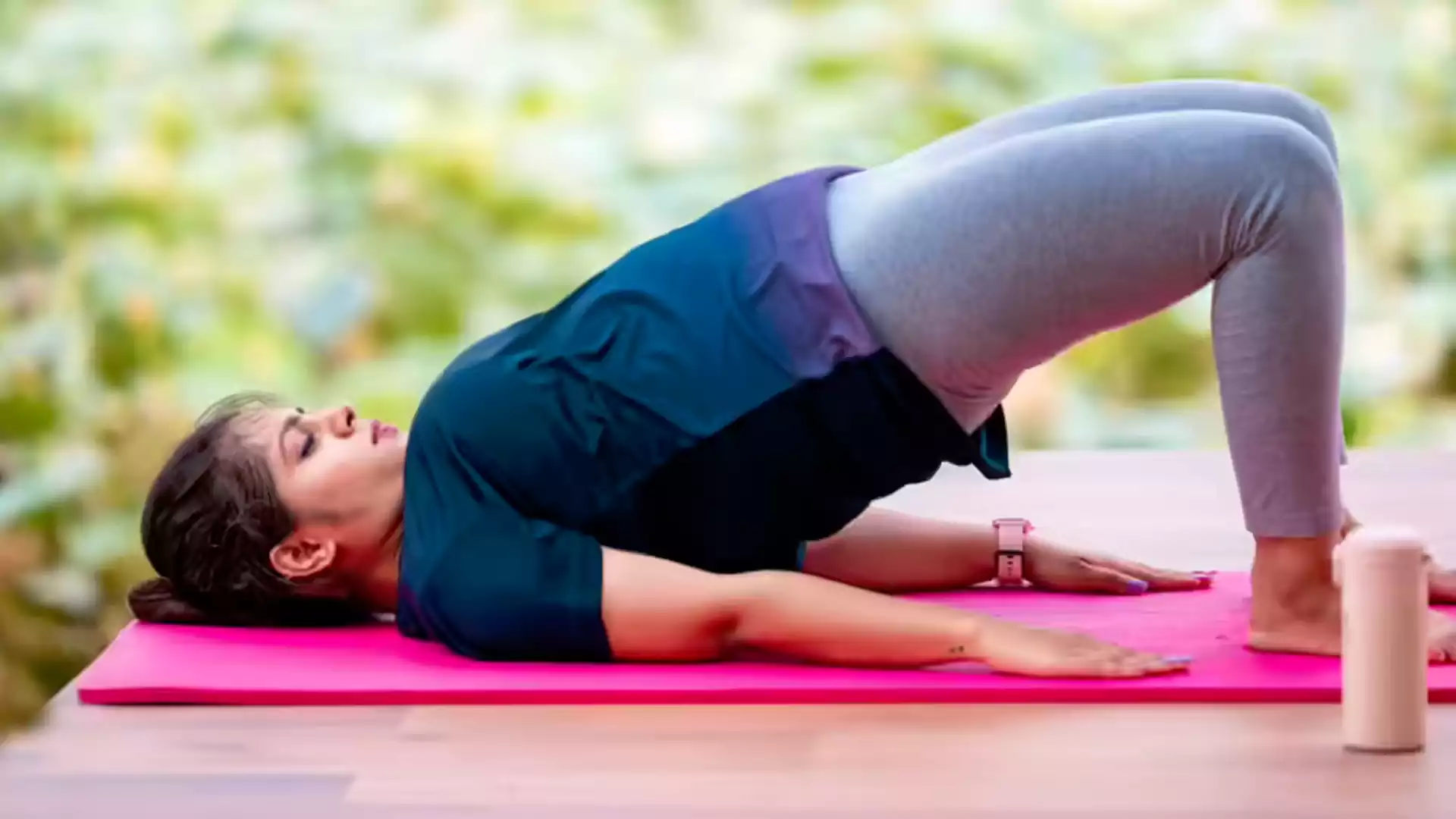Thyroid Solutions with Yoga
The thyroid is a small gland located below the skin and muscles at the front of the neck, just at the spot where a bow tie would rest. It's brownish red, with left and right halves (called lobes) that look like a butterfly's wings. It's light like a butterfly, too, and usually weighs less than an ounce.
Thyroid hormones are released from the gland and travel through the bloodstream to your body's cells. By helping your cells convert oxygen and calories into the energy they need to work properly, these hormones are important in determining if your body will mature as it should. Thyroid hormones also directly affect how most of your organs function. So if your thyroid isn't operating properly, you can have problems in lots of other parts of your body.
Hypothyroidism is a condition when thyroid gland fails to produce sufficient thyroxine for body’s requirement.
Here are few excellent asanas that improves thyroid function.
Sarvangasana
.jpg)
Instruction for Sarvangasana
1. Lie down on the floor on your back, legs together and arms on the sides.
2. Turn the palms down.
3. Relax your body and continue normal breathing.
4. Press your palms and elbows on the floor and raise your legs up making an angle of 90 degrees with the floor.
5. Inhale as you raise your legs.
6. Exhale and while exhaling move your legs towards your head and push your hips and lower back so that they are raised above the ground.
7. Place your palms on the hips and push your trunk and legs up.
8. Move your palms higher up the trunk and keep raising your legs and hips upwards, till the whole trunk is above the ground.
9. Bring the legs back to a vertical position.
10. Support your body with the palms placed on the ribs and elbows and forearm resting on the ground. 11. Sliding the palms higher on the trunk push the hip and back further up so that they are aligned with the legs.
12. At this point, only the head, neck and shoulders should be on the floor.
13. Push your face down and chest up to form a chin lock.
14. Balance your body in this position.
15. Fix your gaze on the big toes of your feet.
16. Inhale and exhale rhythmically and remain in this posture for as long as you can.
17. Slowly return to the starting position in the reverse order.
18. Inhale deeply and exhale slowly a few times.
19. Continue breathing normally.
20. Relax your body by performing Savasana.
Benefits: The main benefit of the shoulder stand is to get the thyroid gland working at peak efficiency. It's the thyroid gland which is mainly responsible for your correct weight and youthful appearance.
Caution: Do not try this exercise if you are suffering from organic disorders of the thyroid gland. Be very cautious if you are suffering from chronic nasal catarrh.
Dhanurasana
.png)
Instructions for Dhanurasana
1. Lie flat on the floor with the abdomen, chest and chin touching the ground.
2. Keep your hands on both sides.
3. Keep both legs a bit apart.
4. Relax your whole body.
5. Bend your legs backward and grasp the ankles firmly with your hands.
6. First raise your chin and then bend your head and neck backwards. The chest should still be touching the ground.
7. Inhale slowly and pull your legs up.
8. Keep raising your head, neck, chin, chest, thighs and knees backwards, such that only the navel region is touching the ground
9. Balance your body on the navel region.
10. Pull your legs and arms arching your body as much as possible.
11. Gradually, bring your knees, feet and toes together.
12. Look up and fix you gaze on the ceiling.
13. Holding your breath maintain this posture until you feel the strain in your back.
14. Start exhaling slowly and gradually return to the starting position.
Benefits
- Massages abdominal muscles and organs and Good for gastrointestinal disorders, constipation, upset stomach, sluggish liver.
Caution: Not for persons suffering from peptic ulcer, hernia, or cases of thyroid or endocrine gland disorders.
Matsyasana

Instructions for Matstyasana
1. Sit in Padmasana and make the feet lock properly.
2. Your knees should be touching the ground.
3. Lean back slowly, taking the support of your elbows.
4. Lie flat on your back.
5. Bring back both your hands and place them near the head with palms resting on the floor.
6. Place the palms under the corresponding shoulders.
7. Taking the support of your palms and knees, push your chest and abdomen up.
8. Raise your hips, back and shoulders from the ground.
9. Arch your spine and now bend your head and neck backward to the maximum limit.
10. Try to place the crown of your head perpendicular to the floor.
11. Remove the support of your hands.
12. Bring the hands forward to hold the upper thighs.
13. Increase the arch of your body with the help of your elbow for support.
14. Extending your hands further now grasp the big toe of the opposite legs and form a lock with the thumb, index and middle finger.
15. Remain in this posture for 10 seconds.
16. Take deep breaths rhythmically.
17. Release your toes and slowly return to Padmasana posture.
Benefits
- The fish posture normalizes the function of the thyroid, pituitary, pineal and adrenal glands.
Sinhasana

Istructions for Sinhasana
1. Sit erect in Vajrasana.
2. Keep your palms on the respective thighs.
3. Raise your buttocks and criss-cross your legs, right leg over the left leg.
4. Keep your head, neck and spine erect.
5. Spread out your fingers on the knees.
6. Inhale deeply.
7. Open your mouth gradually.
8. Exhale slowly and take out your tongue and stretch it out as much as possible. Make a "ha" sound like the roar of a lion from the back of your throat.
9. Look up at your eyebrows.
10. Make the roaring sound 2-3 times.
11. Exhale and come back to starting posture.
12. Alternate the cross of the legs and repeat. Note: Beginners can perform this posture in Vajrasana.
Caution: Do not perform this pose if you have a knee injury.




